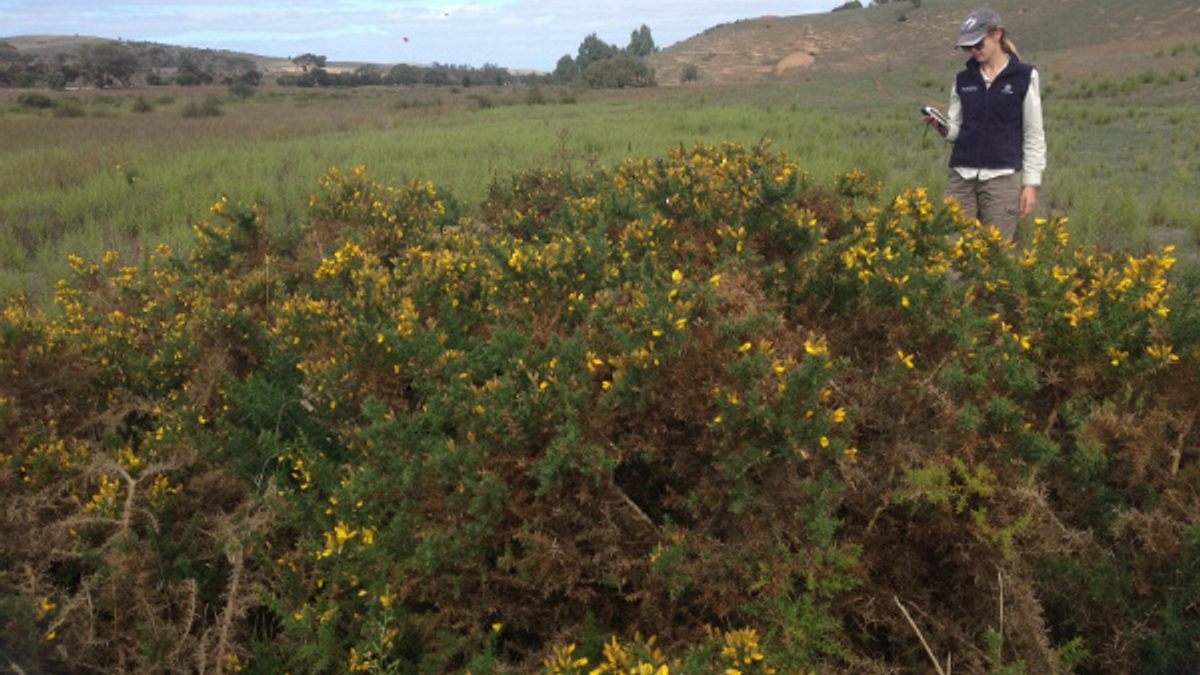Identify and report early to tackle Gorse
Working closely with landholders at Koppio, White Flat and Greenpatch Natural Resources Eyre Peninsula staff have located and controlled a new infestation of the highly invasive and prickly, yellow flowering, Gorse weed.
Natural Resource Officer Gemma Marshall said she is thankful that the landholder made the report because it meant we have located and now controlled another infestation of Gorse that would have gone unchecked, spreading and reseeding.
“In other parts of South Australia this weed is a huge issue and we want to avoid similar issues on Eyre Peninsula. That’s why it’s important to be familiar with the species, report it early and work together to control Gorse infestations as soon as possible.”
Natural Resources Eyre Peninsula have been steadily working to destroy all Gorse infestations for the past six years and are now at the stage of spraying small seedlings each year at known sites. Follow-up control each year is essential because Gorse seed can last up to 20 years in the soil.
“Gorse (Ulex europaeus) is a declared plant under the Natural Resources Management Act 2004 and listed as a Weed of National Significance. Each year Natural Resources Eyre Peninsula undertake a survey of known sites and control any Gorse that we find on lower Eyre Peninsula.”
Originally from Europe, Gorse impacts on the Australian environment and agriculture by reducing carrying capacity, restricting stock and human access, harbouring feral animals and reducing land value. It also poses a fire hazard and threatens the health and function of watercourses, impacts on wildlife and threatened species by invading native vegetation and competes for space, sunlight and other resources.
To identify Gorse look out for evergreen seedlings or shrubs (averaging 3m tall, sometimes growing to 7m) laden with spines and dense woody branches. Leaves have a waxy coating and end in a sharp point while flowers are large, yellow and pea-like with a coconut-like smell.
For more information check the website www.landscape.sa.gov.au/ep/plants-and-animals or report to Natural Resources Eyre Peninsula on 8688 3111.



